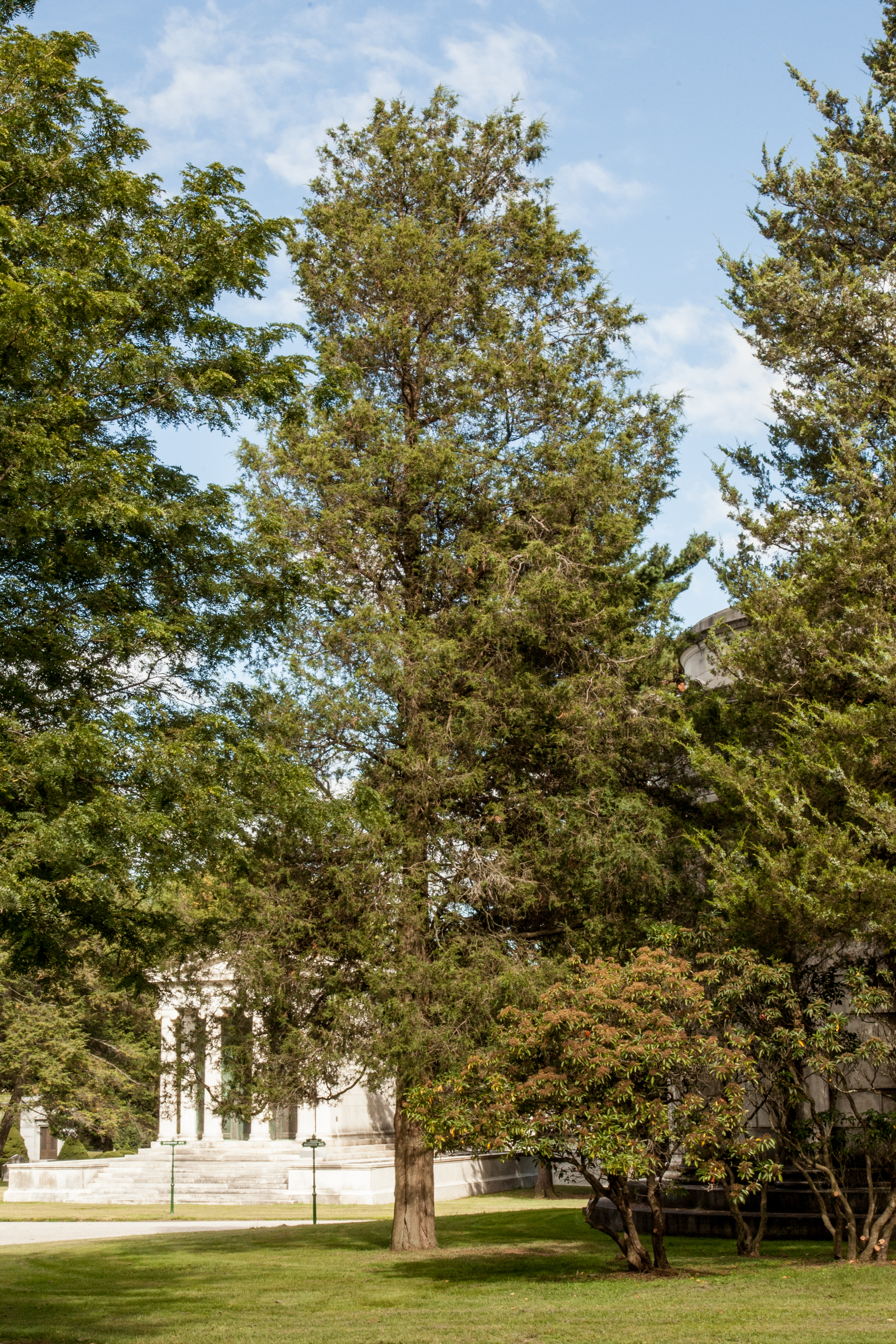JUNIPERUS VIRGINIANA – REDCEDAR, EASTERN

Planted in full sun or partial shade, Eastern Red Cedar will easily grow on a variety of soils, including clay, but will not do well on soils kept continually moist. It is long-lived with one of the oldest trees, in Wisconsin, more than 1,200 years old. There is a stump in the Montreal Botanical Garden from a 375 year old tree. Growth may be poor in landscapes which are over-irrigated.
Plants are difficult to transplant due to a coarse root system, except when quite small. Larger plants can be transplanted if they are root pruned prior to moving them. Water until well-established and then, except for pruning, forget about the tree. It performs admirably with no care, even on alkaline soil and along the coast. Trees often grow on limestone soil in their native habitat.
Natural habitat is dry and windy with full sun exposure. It looks best in an open site with no shade during the day. This allows the foliage to dry quickly in the morning and helps prevent foliage disease from thinning the canopy. A well-drained soil is essential for good growth. Wet soil rots the roots and causes plant decline.
There may be local restrictions on planting this tree near apple orchards because it is the alternate host for cedar-apple rust. Pruning to a single leader helps prevent breakage in ice storms and other storms. Do this by removing leaders that compete with the one you have chosen to become the main leader.
Male trees generate copious amounts of pollen which cause significant allergy problems for many people; female trees produce fruit but no pollen. Female cultivars include: ‘Canaertii’, ‘Chamberlaynii’, ‘Pendula Chamberlaynii’, and ‘Pendula Virdis’; male cultivars include ‘Burkii’, ‘Cupressifolia’, ‘Filifera’, ‘Hillspire’, ‘Prostrata Silver’, ‘Silver’, and ‘Tripartita’.
I (Dr. Gilman) have not been able to figure out why we have not embraced this versatile tree more in American landscapes. Why search off the continent for ornamental and environmentally friendly plants when we have a great one right here at home. There are many opportunities to select outstanding cultivars or use the ones we already have.
This tree makes a wonderful street tree and has performed well in this role in some communities, especially along the coast.
Plants serve as hosts for swedner’s hairstreak (Mitoura gryneus swedneri) butterfly larvae. The fruit is eaten by robbins, bluebirds, cedar waxwings and mockingbirds, among others.

